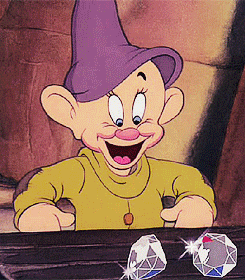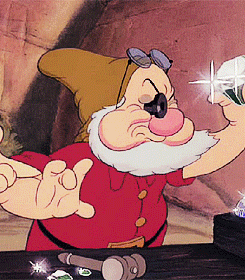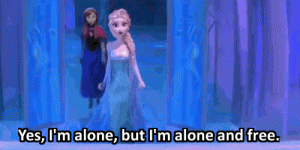By Ashley Gonzalez
Contrary to popular belief, disability studies and educational reform have become a major priority in the literary, critical, medical, and political world. Just recently in 1990, the Americans with Disabilities Act was passed to give civil rights to people with disabilities. This shows how oblivious many were to the severity of disabilities in society before this time, and also how people with disabilities have been ostracized and abused through out centuries. Popular theorists such as Ronald J. Berger and Lennard J. Davis introduce terminology and views on how to better understand disabilities. According to Berger, “disability studies- an interdisciplinary field of inquiry that includes representation from social sciences, the humanities, and the medical, rehabilitation, and education professions- is vital to an understanding of humankind” (Berger, Introducing Disability studies. 2013). Berger is definitely opening the doors and helping those with disabilities find their place in society. Davis, on the other hand, focuses on the “construction of normalcy” saying, “the problem is not the person with disabilities; the problem is the way normalcy is constructed to create the problem of the disabled person” (Davis, The Disability Studies Reader. 2006). Basically, society gets to label what is normal and what is not. Here, I will look at how Disney portrays disabilities and the treatment the characters receive.


The first Disney movie I would like to Discuss is Snow White and the Seven Dwarfs. All of the seven dwarfs have some kind of disability on top of having a growth impairment. The two main dwarfs are Dopey and Doc. Doc is the leader amongst the seven and suffers a speech impediment, having trouble pronouncing words correctly and often stuttering. He is also slightly bigger than the other dwarfs which makes the others look weaker. Doc’s disabilities are a perfect representation of Berger’s ableism-“assumes that some people (and bodies) are normal and superior while other people are abnormal and inferior” (Berger, Introducing Disability studies. 2013). Due to Doc’s condition he was the most able dwarf and all the other dwarfs were secondary to him. Disney’s representation of Doc shows that disabilities like or similar to his makes all the others lesser and more reliable to the “normal” or “most normal” person. On the other hand, Dopey is the complete opposite of Doc and ableism. Dopey’s disability would put him in the intellectual disability category. Intellectual disability is significant limitations intellectual functioning and adaptive behavior, which covers many everyday social and practical skills, this is also the term now used for mental retardation. Dopey shows signs of this disabilities by not being able to talk and his child like behavior. Dopey also seems to be very clumsy, tripping over everything and trying to mimic the other dwarfs through out their daily routines. Disney, clearly depicts Dopey as a disabled person by making him the weakest dwarf and also with the name he was given.
Another Disney movie that shows a character with a disability is Frozen. Elsa’s powers can be seen by how society outcasts people with disabilities. As a result of her magic power to make ice come out of her hands, Elsa was different from everybody else in the movie. Her parents kept her in isolation and taught her that her power was bad and she needed to always control it. This relates to Davis’ theory that society controls what is considered normal. Davis says, “characters with disabilities are always marked with ideological meaning, as are moments of disease or accident that transform such characters. One of the tasks for a developing consciousness of disability issues is the attempt, then, to reverse the hegemony of the normal and to institute alternative ways of thinking about abnormal” (Davis, The Disability Studies Reader. 2006). Once Elsa ran away and completely confined herself from everyone, she was able to accept who she was and embrace it. Elsa also began to feel free and without shame or fear of her power. Towards the end of the movie she gets acceptance from society and was able to openly be herself without feeling like a monster for being different. Frozen also goes to show how Disney came along way with its portrayal of disabilities in movies.

The last Disney movie I would like to talk about is Beauty and the Beast. Lefou’s character in the cartoon version could have had a disability. He was a lot shorter than all the other characters and also very clumsy. His physical appearance was also much different than those of the other characters. He always had a lost expression on his face and his tongue sticking out of his mouth but he was able to talk clearly. Lefou seems to show signs of having a learning disability or on the low spectrum of autism. There are a few times in the cartoon where Gaston refers to him has “stupid” or disregards his intelligence. Lefou also seemed very child-like and following Gaston around and trying to be like him. He can’t do things like Gaston and kind of messes up everything he does due to his clumsiness. This also shows ableism and how easy it was for Gaston to use his superiority over Lefou to get him to do whatever he wanted. It also shows how people with disabilities can easily be taken advantage of and not even notice because they want to fit in. Lefou shows how some people with disabilities can easily be bullied by others because they want to fit in and get accepted.
There are plenty of other Disney movies that show characters with disabilities and how they are treated. I have noticed that the treatment of these characters change with the generation which the movie was released. Movies can play a role in how society sets the mold for people to know what’s accepted and what is not accepted. Disney movies can be used to instill in the minds of children on who they can accept and who to outcast. They can compare character traits with those they see on TV and treat people with similar traits the way they see them getting treated in movies. Being that this is such a powerful outlet to relay messages especially to young children, Disney should start making more movies that accept people with disabilities and show ways to help them. This can help change society and form new opinions on disabilities.


